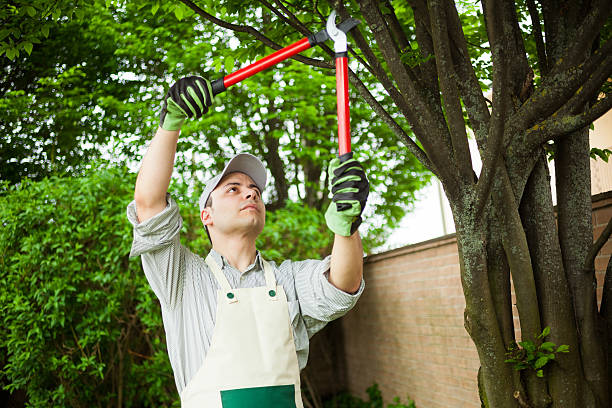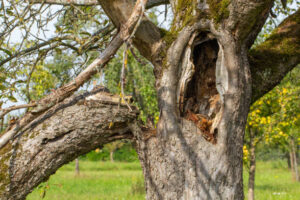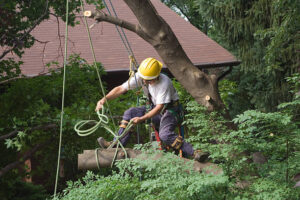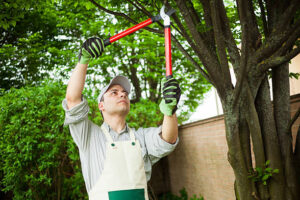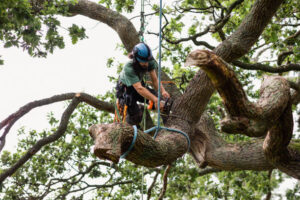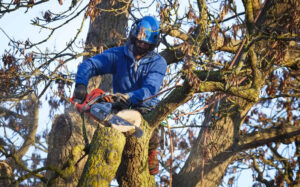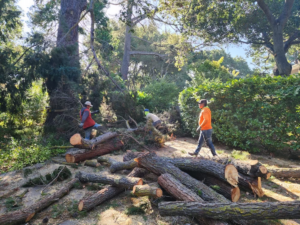It is a no-brainer: trees are essential for a healthy environment. From absorbing carbon dioxide, preventing soil erosion, adding aesthetics to the landscape, and providing animal habitat, there is no doubt about the importance of trees. Despite these benefits, trees can have adverse effects on the environment if not well maintained.
Proper tree care, like pruning and trimming, enhances the benefits of trees to the environment. This blog post will give you the merits of caring for your greeneries.
1. Prevents Soil Erosion
According to the Food and Agriculture Organization (FAO), it takes around a thousand years to produce 2-3 cm of soil. If this is anything to go by, it is essential to prevent soil erosion because it could impact generations. Well-maintained trees help prevent soil erosion and add humus to the soil.
Tree canopies can smother other vegetation due to inhibition of light. Pruning and trimming allow other plants to access light and grow. When there is vegetation under the trees, the risk of erosion reduces, conserving soil fertility.
2. Prevents Spread of Diseases
One of the primary objectives of tree pruning, removing, and trimming is to control pests and diseases. When a tree is infested, it can spread pests or diseases to other plant species. Proper tree care involves removing all branches or trees that host pathogens or pests.
Diseases like anthracnose, leaf spots, powdery mildew, and root rot can spread fast if not tamed early. There are also pests like aphids, ash borers, Asian longhorn beetles, and gypsy moths that call for pruning or removal of affected trees or branches.
3. Maximizes Nutrient Uptake
Whether a tree is healthy, diseased, or infested, it needs nutrients to grow. Because of the uncontrolled growth, neglected trees tend to pull more nutrients from the soil while depriving other vegetation of useful resources. Deprivation of nutrients means stunted growth or smothering of the vegetation, exposing the soil to erosion agents.
Apart from that, pruning allows sunlight penetration for a healthy ecosystem. Plants need sunlight for photosynthesis and growth. Without enough light, they can’t synthesize their food efficiently, leading to poor health or even death.
4. Ensures Healthy Growth of Vegetation
If unmaintained, trees like blue gum can take more than their fair share of nutrients, water, and space. Consequently, they inhibit vegetation growth under their canopy. When you prune such trees, you allow small plants to grow and thrive without being overshadowed.
Healthy growth of vegetation not only prevents soil erosion but also provides habitat for animals. For example, birds and critters find a haven in the underbrush, creating a vibrant ecosystem. This diversity in flora and fauna contributes to the environment’s overall health.
5. Provides Safe Habitat for Animals
Over the last few years, wildfires have become commonplace globally. Although most of these catastrophes result from human activity, others occur due to the availability of dry trees that spread the fires fast. Proper tree care prevents the occurrence of such wildfires, highlighting a critical aspect of environmental stewardship.
Neglected trees can also fall due to infestation by diseases or pests. If they fall, they not only destroy animal habitats but they could also block access to essential resources like pasture and water.
6. Maintains a Diverse Ecosystem
Proper tree care involves maintaining a balance in the ecosystem so that all plants can thrive. In the survival of the fittest, some plants can become extinct because they can’t compete with other vegetation. Trimming and pruning large trees gives other shrubs a chance to grow.
Some animals depend on specific plants for food or shelter. If their growth is inhibited, the animals die or shift to a different environment. The ripple effects of an unbalanced ecosystem affect plants and animals.
7. Conserves Energy
Tree training is an integral part of proper care. You can train trees to provide shade or grow in a certain direction. During summer, the shade from trees reduces energy costs because less air conditioning is required. Reduced energy usage is advantageous to the environment.
Because trees act as windbreakers, they reduce the cost of heating houses in cold areas and during winter. Consequently, they reduce energy consumption. When usage is low, the bills also reduce, and so does the negative impact of energy production on the environment.
Conclusion
Proper tree care is beneficial to the environment. Whether trimming, pruning, or removal, taking the necessary steps to maintain healthy trees can significantly impact the overall well-being of our natural surroundings. It ensures the harmonious co-existence of large and small plants, animals, and vegetation.
Firefighter Tree Services provides an all-in-one solution for tree management. If you are looking for certified arborists to help in pruning, trimming, or removal, you can count on us. We have extensive experience working with the Redwood City community and understand the local biodiversity.
